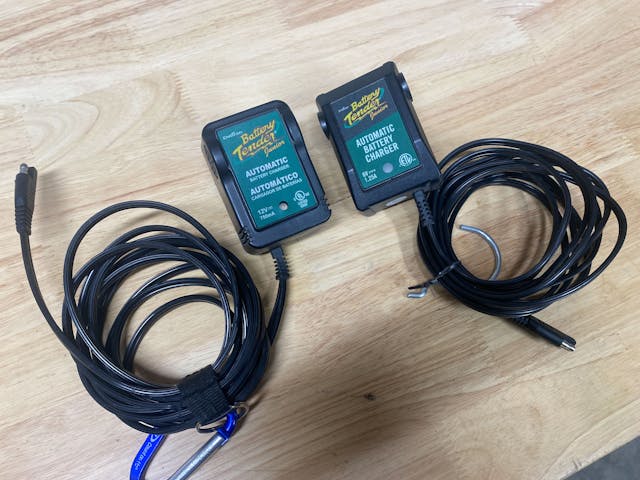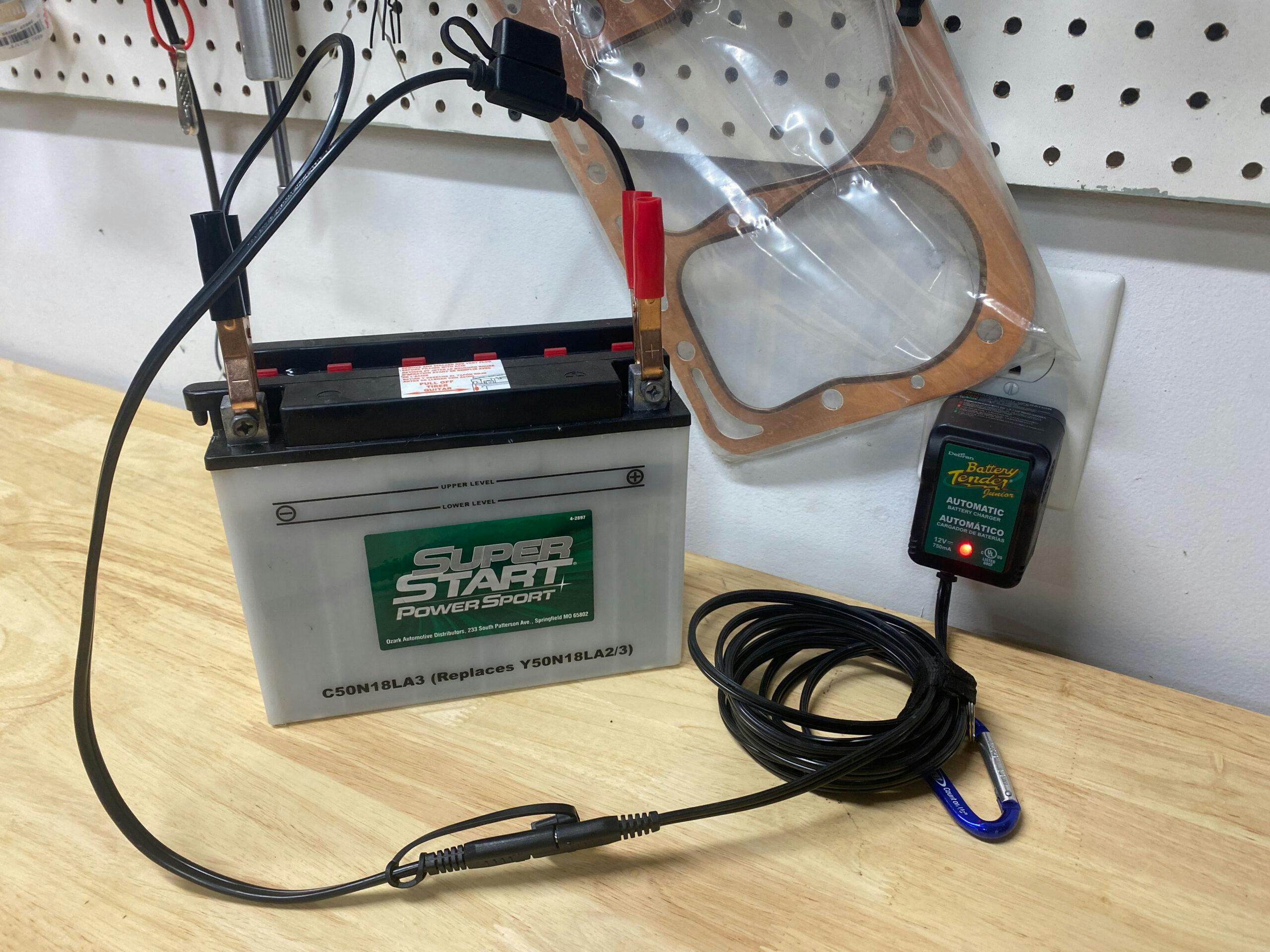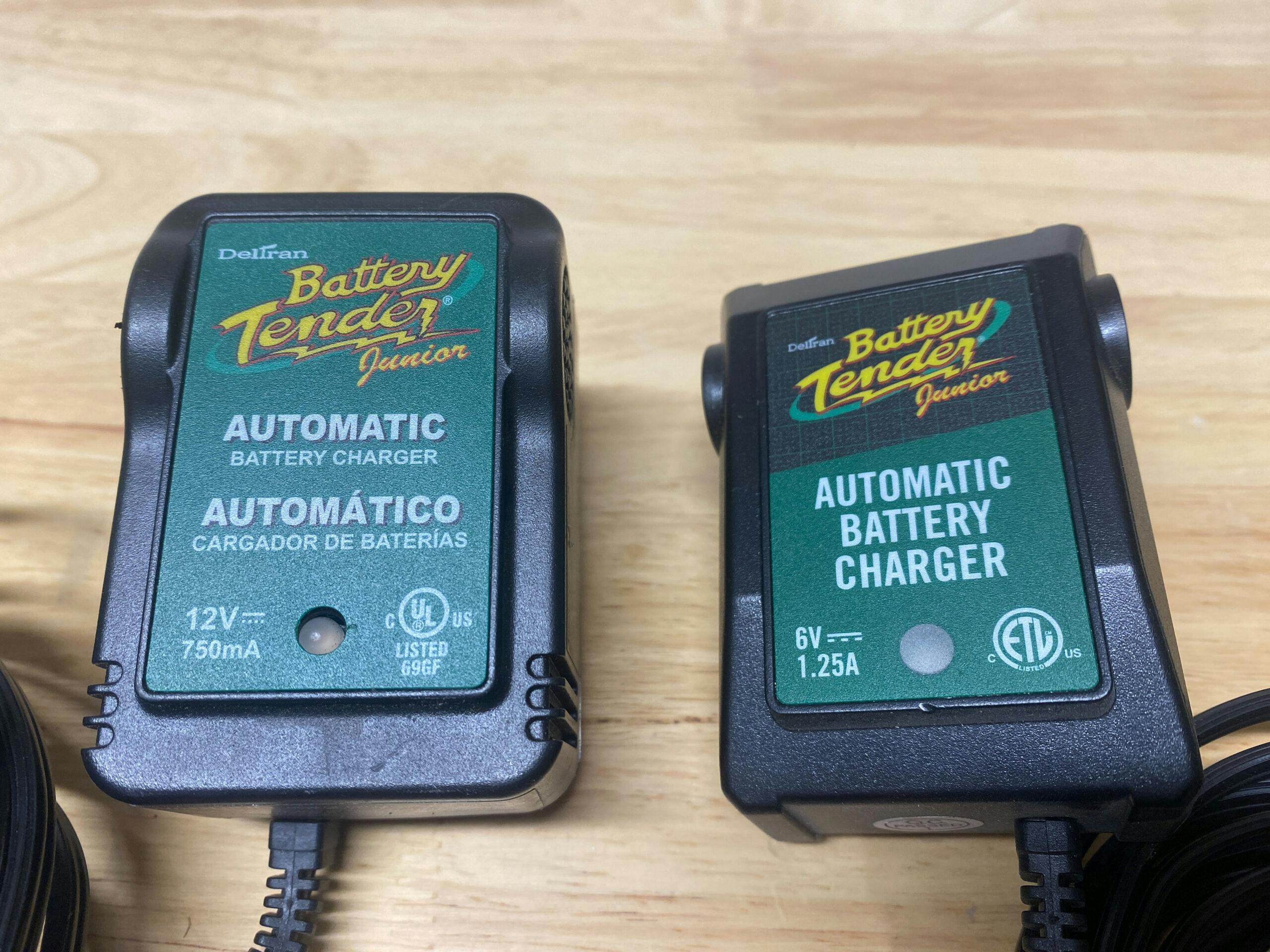3 tips for storing car batteries
No, this is not an article about EVs. The vast majority of internal-combustion cars have been equipped with some type of electrical storage device for over a century, yet few understand the details of them or how to properly care for the various types you might encounter.
Maintaining a battery to last for years is not an exacting science, but it is a science. We won’t pull you aboard a time machine and drag you back to your senior-year chemistry class, but with the weather changing and cars heading for slumber in parts of the country, it’s a good time to review what you should know about this vital automotive component.
Batteries are important for a variety of reasons. They provide the current needed to spin the starter motor, ensure the ignition has proper voltage, excite the charging system, and more.
Technology has advanced significantly over the years, but many of the principals around how batteries work, and how to best care for and feed them, have not. Knowing these best practices will save you money, peace of mind, and even time.
Lead acid vs. AGM vs. lithium ion

The first thing to talk about is construction. Most batteries look more or less the same—the exterior is commonly a plastic case with two terminals, one positive and one negative.
The most basic and common battery that you will encounter in vintage cars is a flooded lead-acid. These consist of multiple electrode plates suspended in a case flooded with a mixture of acid and distilled water.
The next step up is an absorbed glass mat (AGM) battery, which is functionally the same a flooded lead-acid. The biggest difference in an AGM battery is that the positive and negative plates are separated by fiberglass mats that absorb the mixture of acid and water to prevent it from sloshing.
AGM batteries can be sealed, and thus are often easier to mount since the acid is captured in the fiberglass mats. You can position them with the terminals facing any direction—up, down, or sideways—without worrying about leaks. By comparison, a standard lead-acid battery requires venting as they do emit gas during regular charge/discharge cycles. That vent dictates how the battery needs to be mounted.

For even more benefits, you can leave lead-acid behind completely and switch to a different chemical makeup—lithium ion. These batteries are smaller, lighter, can handle being fully discharged much better, and operate better across a wider range of temperatures. Of course everything comes with a drawback, and the big one here is that lithium-ion does not tolerate being overcharged, as I found out a few months ago.

All three of these types work well in automotive starting applications, where the rate of discharge and charge are not extreme and large amounts of storage is not required. Each has strengths between cost, ease of use, and lifespan that owners will need to balance when selecting the right one for their ride.
Trickle vs. maintenance vs. regular charging
Type “battery charger” into your search engine of choice and you will be inundated with options and likely paralyzed by choice. Depending on what you do, there probably is not one single charger that will fit all of your needs. Here is a quick breakdown of the three types.
Regular: This is meant to quickly top up a battery that has been discharged. Bringing one back from fully empty to a usable level takes time, and a regular charger is your best bet to get back on the road the fastest.
However, it is not the right tool for keeping a battery in top charge while not being used. Proper use would require using a regular charger for a short period every 30–45 days, depending on discharge rate. Remembering to connect and disconnect the charger appropriately can be tough and could lead to damage if the battery is overcharged or let go until it’s completely flat.

Trickle: A trickle charger slows down the rate of charge being put into a battery, increasing the voltage slowly. It can sometimes revive batteries that a regular charger would damage. The trickle charger is perfect for long-stored cars, but there is still no cutoff which means if left on indefinitely, this type of charger could still damage your battery.
Maintenance: The maintenance charger was created to solve the problem of overcharging. This is essentially a “smart” trickle charger that detects battery voltage and, when it senses the battery is topped off, tapers or stops charge flow periodically. When the maintenance charger cuts charge, it allows the battery to discharge naturally. When the voltage drops low enough, it will begin charging again.
This prevents both overcharging and the battery going completely flat by taking the guesswork out of putting a charger on and keeping track of voltages. This is our recommendation for any car that is not regularly driven. Both six-volt and 12-volt maintenance chargers can be found for prices that won’t break the bank. (Certainly for less than the cost of a new battery every few years!)
Removal vs. maintaining in place
This one is less about the battery and more about the vehicle. We all agree that maintaining a battery is important, but is leaving it out in a cold car still acceptable? Most batteries want to be kept at temperatures of around 75 degrees Fahrenheit. If your car rests somewhere much chillier than that for extended periods of time, you risk decreasing the capacity of the battery. Maintenance chargers can help by keeping the voltage at a level that won’t degrade the battery or damage the electrolytes, but the decision is more involved than simply stringing up a charger and ducking out of the snow.
Modern cars, with all their techno-wizardry, often need a constant battery connection and voltage in order to keep the computers happy. While removing the battery might seem ideal to keep the battery at proper temperature, it might be better to leave it in place and find a way to keep it charged appropriately.
For vintage cars that don’t even have a clock to reset if power is disconnected, the removal option should be considered in order to extend the life of the battery. Everything in life is about trade-offs, and replacing a battery more often—remember, a battery is a consumable wear item, like tires—in order to keep the finicky computers happy might be the right choice.
Batteries are often overlooked until the moment they die or otherwise leave us stranded. An ounce of prevention is worth a pound of cure though, which means properly selecting and caring for your car’s battery can give you years of trusty starting and driving.
Check out the Hagerty Media homepage so you don’t miss a single story, or better yet, bookmark it.





The maintenance charger is the best. I have loved using mine for years.
Can I store my DieHard battery in a non heated garage ( ie freezing temperatures in winter) while attached to a Duracell Automatic battery charger? (A trickler I assume
Josephdemeyer,seems nobody answered your question specifically but my lexus with the lead acid battery and the Battery Tender 4 AMP Selectable Charger – 022-0209-BT-WH,about 90 dollars.Survives in a carport in snowy weather.Better yet get the Noco Genius 10,its 10 amps in charger mode and charges/naintains many chemistries of batteries.Spend the 125 dollars or so and your charger problems should be over.Ya’ll agree?
Knock on wood but I have not had to replace a SINGLE battery since I started using battery maintainers (in about 2017). I have 12V ones on my 2 classic cars, 3 on my boat and jet skis, 1 on my lawn tractor and an 8V maintainer on the 8V battery in my ’32 American Austin.
I use all of the maintainers year round when the motorized object is not being used. Best investment I ever made.
I have switched to using the Save A Battery maintainer/chargers after meeting the inventor and owner of the company at the Autorama at Cobo Hall years ago. He told me how they work and the advantages over other maintainers sold me. Having the ability to mount it to the wall and run the cables for long distances outside to the vehicle was a HUGE plus. Then a few years later I saw the same set up on the walls of Tim Allen’s garage while Jay Leno was visiting made me think I was right to pick them since someone with plenty of money could choose whatever they wanted.
One small note, Kyle – you state that Lithium batteries tolerate being completely discharged better than lead-acid batteries. They do not. Complete discharge will often kill a Li battery, and is to be avoided at all costs.
Always interested in discussions centering on getting the most out of parts, batteries being particularly expensive, and there being multiple opinions and experiences, this is a great topic.
If battery maintainers are recommended but the battery tenders pictured are trickle charges and not maintainers, can anyone share some specific examples of recommended battery maintainers that would be appropriate to leave plugged in continuously? Thanks
Battery Tender brand does make charger/maintainers, along with several other brands. Some of other popular brands include NOCO or CTEK. Also worth noting is that it seems (as another commenter pointed out) that newer Battery Tender Junior models are both maintainer and charger combined.
I am that not-so-rare combination of lucky and stupid. Since 1989 I have stored C3 and C4 Corvettes here in Rochester, NY in an unheated garage by simply disconnecting them. They stay right in the car. Every spring they get re-connected and I turn the key and go for the first drive of the season.
I hoped to hear more about these new lithium batteries for cars. Cost vs. lifespan, special charging requirements etc.
Another warranty post for you. Ever notice that your new cars battery was always the longest lasting battery? It wasn’t because everything was new on the car. From the big three. They wanted the battery to last past the warranty period. All of these batteries were made of calcium-calcium plates not calcium-antimony. Calcium-Calcium is by far superior. In the case of Dodge and Ford, when you walked over to their parts counter you were not buying the same battery your car came with. You were buying a Calcium- Antimony battery. It never lasted as long as that first battery.
Interesting. Thanks for sharing!
I have done exactly the same thing with the cars I store every winter — simply disconnect the battery in the fall and reconnect in the spring. The cars have all been in unheated buildings in Minnesota. Been doing it since 1968 and never had a problem.
Just a side note! If you have a Collectible car with a generator, you may not want to take the battery out of the car or disconnect it from the car. After a few months, your generator will lose it’s exciter field (magnetism). You will need to flash the generator to restore the lost residual magnetism to produce voltage so your generator and voltage regulator can recharge your battery and run the lights etc…
OK,3 stories.
1-LS400 with a 50Ma draw,got the high end Battery Tender i plug into a connector installed in front bumper,no more dead batteries.Nice because of all the nice cabling answers they have.
2-,Jeepster Commando 1967,a 10 watt solar panel on roof to a charge controller to battery,always starts,always at 12.8 volts.75 dollar true lifetime fix.Dang but I love solar fixes.
3- Needed a charger to bring LifePo4 home backup batteries to a full charge before home built solar system hookup.Saw a Noco Genius 10 in operation,owner raved about it,so I got it.It is the most awesome 10 amp charger,charges every chemistry,6 or 12 volt,thing is a beast.Recommend that highly.
Very happy with all 3 choices,
With regard to keeping computers happy, would it not be possible to replace the battery with a 12V on-demand source connected to the local electrical grid? The battery could then be kept in a warmer place and kept up via a battery maintenance system.
The recent “desulfating” tender/chargers kept one of my batteries good for 7 years. One yearly check showed it was about ready to go, the next year (after using the tender) showed it was absolutely fine. It took another 3 years for the battery to finally get below starting amps.
Yeah, we got a lifetime battery from JC Penney in the 70’s, still have the car. Now you know why they went out of business, we did our part.
As far as sitting batteries go, I’ve found that letting them go dead and reviving them does something bad to them- they don’t last long at all.
I did the same thing when my new 1971 Camaro needed it’s first battery replacement in 1977. JCP (or their current replacement source – Firestone) has replaced the “Forever Battery” whenever needed. I’ve probably gotten 8 or 9 free batteries since I still own the car. I have all the paperwork, so as long as JC Penney stays in business, I expect to get a free battery. After JCP got rid of their auto service centers, and before Firestone took over, the store told me to buy a battery and they would reimburse me. So, I bought an Optima battery and they sent me a check for the full price. They’ve lost a lot of money on me.